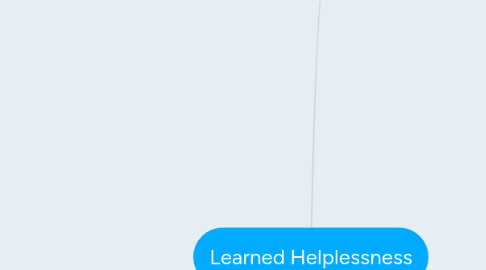
1. Characteristic Symptoms of Depression (Seligman)
1.1. Emotional Disturbance: a state of "...sadness, lassitude, and a hopeless outlook on life."
1.2. Reluctance to Initiate Action
1.3. Cognitive Deficit: the "...difficulty in solving solvable problems or learning learnable things."
1.3.1. "It is the belief in one's own helplessness that is the problem."
1.3.1.1. If there is learned helplessness, can there be learned optimism?
2. Depressive Explanatory Style
2.1. Maladaptive Explanatory Style (Nolen-Hoeksema, et al.)
2.1.1. A maladaptive explanatory style is significantly associated with lower levels of achievement and more helpless behaviors in the classroom
2.1.2. Children who tended to explain bad events by internal, stable, and global causes and good events by external, unstable, and specific causes reported more depression and showed more achievement-related problems. On the other hand, children who were not depressed and who were not having achievement problems tended to explain bad events by external, unstable, and specific causes and good events by internal, stable, and global causes.
2.2. Causal Attribution: target explanation or excuse for the "...causes of misfortune."
3. Personal Helplessness vs. Universal Helplessness (Abramson, et al.)
3.1. Personally helpless individuals make internal attributions for failures
3.1.1. e.g. A student studies diligently, hires tutors, and takes remedial courses but still fails the class and attributes failure to personal stupidity (an internal attribution)
3.2. Universally helpless individuals make external attributions for failures
3.2.1. e.g. A father spends all of his resources and time to find a cure for his child, who is diagnosed with leukemia; but nothing changes his child's health so he gives up and believes that the course of the disease is independent of his responses or the responses of others (an external attribution)
